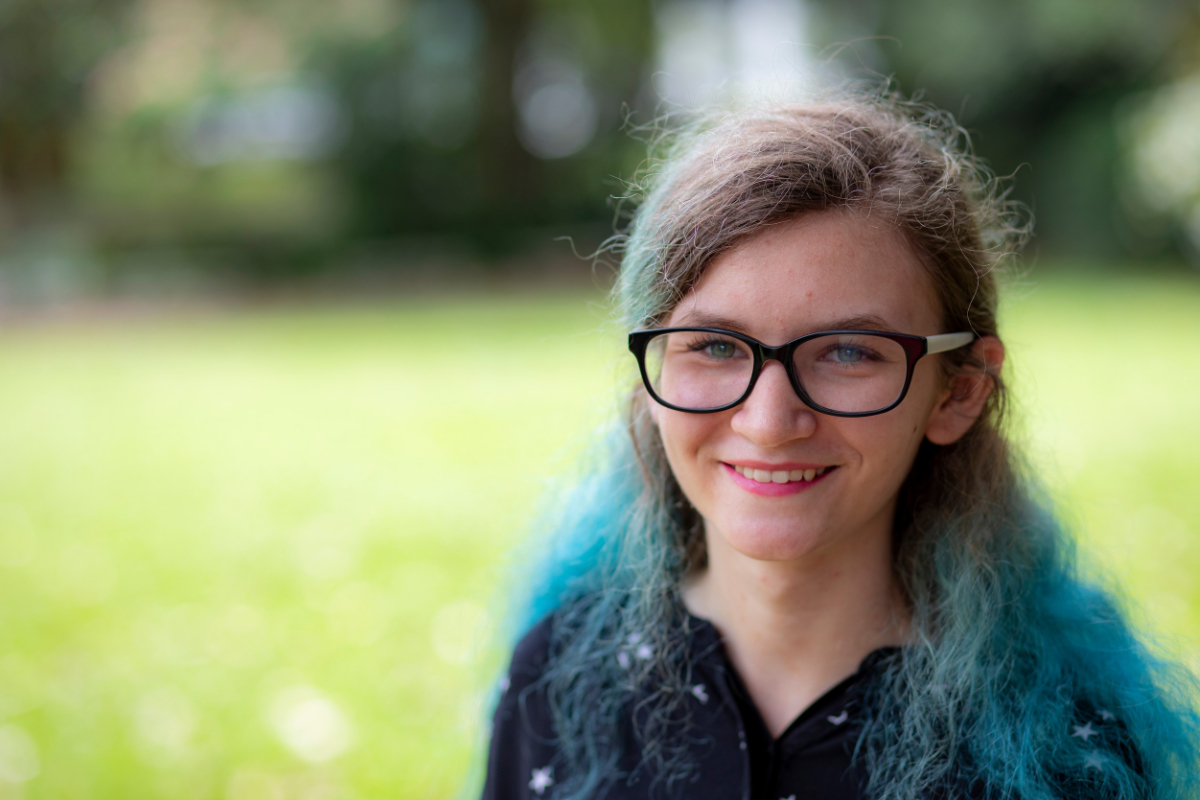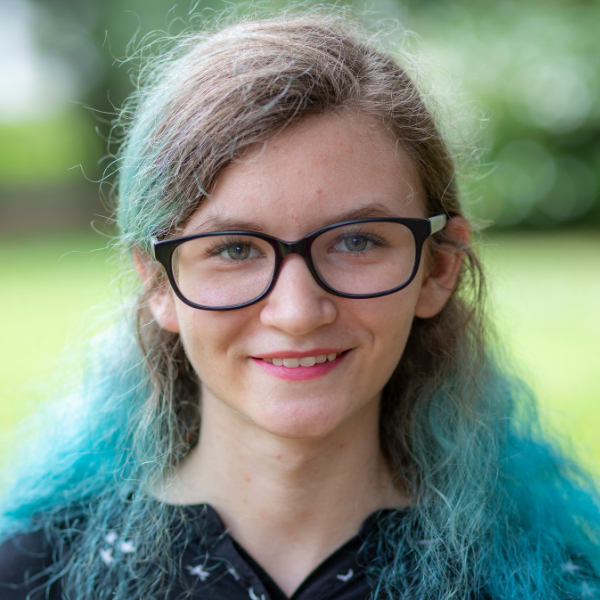Chansey Champagne is a physics major with an interest in astronomy — an interest that grew while watching the Science Channel growing up.
“For some reason, the TV would always play the Science Channel at home,” she said. “Being an 8-year-old, I didn’t really have the authority to change it.
“But then the space documentaries would start playing and it would catch my attention,” she said. “I started checking out space books from the library and learn as much about it as possible.
"That interest never really faded away. And then I learned that majoring in physics is the best way to be able to go into astronomy.”
Student Research Opportunities in Physics
Chansey started at UL Lafayette with a scholarship as a student worker in the Department of Physics. With a curiosity for astrophysics, she took interest in assisting Dr. Manavi Jadhav's research on micrometeorites.
“I thought it sounded fun to try to discover something that nobody’s really looked for,” she explained. “Micrometeorites have been found in Norway, but nobody’s thought to look here. So, we’re trying to find them here in Lafayette."
Becoming involved with the micrometeorite research has required Chansey to be very hands-on — and that's what makes it fun.
“It’s fun,” she said. “Just being able to find something that was once in space – because you see stuff in museums, and yeah that’s cool, but to be able to find it yourself and learn about the process of what it took for that little piece of space dust to get here.”
Finding Micrometorites
“Normal meteorites fall every so often, but most of the material that falls to earth is too small to see,” Chansey explained. “It’s only a few micrometers across. I think it’s like 100,000 tons hit the earth every year, but we can only find them in really clean places like Antarctica that haven’t been touched by people. Here, it would be mixed with organic dust and manmade dust."
To find the micrometeorites, Chansey and her fellow researchers are taking samples from flat-roofed buildings — starting with buildings on campus.
“We went on the top of the roof of the physics building and we collected some dust. We’re in the stages of processing it,” she said.
“We collect that dust, clean out the organic material, go with a neodymium magnet and collect all the really magnetic stuff. We clean out the organic material that might have stuck to it, then we go to look at them under a microscope.
“All of this research is based on a book about someone who’s doing the same thing in Norway,” she said. “Some of the stuff was kind of vague, specifically with how to clean it, so we’re working out the kinks.
Showcasing Research Findings at Conferences & in Museums
The plan, if any micrometeorites are found, is to share their research.
“We’re going to try to create a collection to study them,” Chansey said. “People have studied the big meteorites, but there have only been a few studies on micrometeorites. We’re going to try to work something with the Lafayette Science Museum because eventually, we’re supposed to be collecting from their roof."
Chansey also plans to present their findings at the Louisiana Academy of Sciences conference.
“It will be the first time I’ve gone to something like this and shown off what I’m doing," she said.
A Family of Physics Majors
Outside of the research, Chansey enjoys spending time with her physics family.
“Even if you’re having trouble in a class, if you go to that professor, they’re willing to help you,” she said. “That’s what they’re here for. It’s all close-knit so you build these relationships and it’s like a second family.
"There’s a lot of opportunities, like with the conference, and there are internships. They’re willing to give you opportunities to further yourself.”


